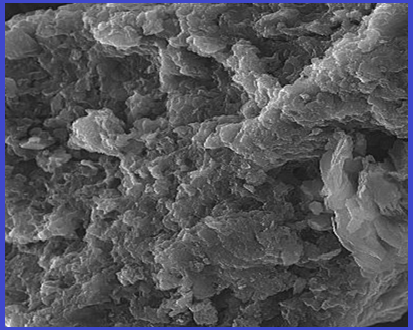Catalytic ozonation process using ZnO/Fe2O3 nanocomposite for efficient removal of captopril from aqueous solution
Volume 5, Issue 03, Pages 31-39, Sep 2022 *** Field: Analytical Method in Pharmaceutical Material
Abstract
The presence of pharmaceutical compounds in aqueous media, even in low concentrations, has caused adverse effects on human, animal, and environmental health. Captopril is a widely used pharmaceutical compound detected in the environment at different concentrations. Because of the concern and problems caused by the presence of captopril in water and the aquatic ecosystem, it appears necessary to remove it from the environment. The current study investigated captopril removal by a catalytic ozonation process using ZnO/Fe2O3 nanocomposite as a low-cost catalyst. The effects of variables such as ZnO/Fe2O3 nanocomposite dosage (0.5-2.5 g L-1), solution pH (3-11), initial captopril concentration (10-70 mg L-1), and ozone dosage (0.2-1.5 mg min-1) on captopril removal were investigated. The removal captopril of 99.4% was obtained in the optimum condition, including ZnO/Fe2O3 nanocomposite dosage of 2.0 g L-1, solution pH of 5.0, initial captopril concentration of 40 mg L-1, and ozone dosage of 0.5 mg min-1. The ZnO/Fe2O3 nanocomposite as a catalyst was a critical component in the catalytic ozonation process. According to the obtained results, the catalytic ozonation process in the presence of ZnO/Fe2O3 nanocomposite has high efficiency in removing captopril from water sources.
References
P.A. Nishad, A. Bhaskarapillai, Antimony, a pollutant of emerging concern: A review on industrial sources and remediation technologies, Chemosphere, 277 (2021) 130252. https://doi.org/10.1016/j.chemosphere.2021.130252.
S. Ahmed, F.S.A. Khan, N.M. Mubarak, M. Khalid, Y.H. Tan, S.A. Mazari, R.R. Karri, E.C. Abdullah, Emerging pollutants and their removal using visible-light responsive photocatalysis–a comprehensive review, J. Environ. Chem. Eng., 9 (2021) 106643. https://doi.org/10.1016/j.jece.2021.106643.
M.R. Cunha, E.C. Lima, D.R. Lima, R.S. da Silva, P.S. Thue, M.K. Seliem, F. Sher, G.S. dos Reis, S.H. Larsson, Removal of captopril pharmaceutical from synthetic pharmaceutical-industry wastewaters: Use of activated carbon derived from Butia catarinensis, J. Environ. Chem. Eng., 8 (2020) 104506. https://doi.org/10.1016/j.jece.2020.104506.
F.M. Kasperiski, E.C. Lima, C.S. Umpierres, G.S. dos Reis, P.S. Thue, D.R. Lima, S.L. Dias, C. Saucier, J.B. da Costa, Production of porous activated carbons from Caesalpinia ferrea seed pod wastes: Highly efficient removal of captopril from aqueous solutions, J. Clean. Prod., 197 (2018) 919-929. https://doi.org/10.1016/j.jclepro.2018.06.146.
L. Zhang, D. Edwards, K. Berecek, Effects of early captopril treatment and its removal on plasma angiotensin converting enzyme (ACE) activity and arginine vasopressin in hypertensive rats (SHR) and normotensive rats (WKY), Clin. Exp. Hypertens., 18 (1996) 201-226. https://doi.org/10.3109/10641969609081765.
S. Hena, L. Gutierrez, J.-P. Croué, Removal of pharmaceutical and personal care products (PPCPs) from wastewater using microalgae: A review, J. Hazard. Mater., 403 (2021) 124041. https://doi.org/10.1016/j.jhazmat.2020.124041.
B. Wang, H. Zhang, F. Wang, X. Xiong, K. Tian, Y. Sun, T. Yu, Application of heterogeneous catalytic ozonation for refractory organics in wastewater, Catal., 9 (2019) 241. https://doi.org/10.3390/catal9030241.
E. Issaka, J.N.-O. Amu-Darko, S. Yakubu, F.O. Fapohunda, N. Ali, M. Bilal, Advanced catalytic ozonation for degradation of pharmaceutical pollutants―A review, Chemosphere, 289 (2022) 133208. https://doi.org/10.1016/j.chemosphere.2021.133208.
J. Wang, Z. Bai, Fe-based catalysts for heterogeneous catalytic ozonation of emerging contaminants in water and wastewater, Chem. Eng. J., 312 (2017) 79-98. https://doi.org/10.1016/j.cej.2016.11.118.
S. Psaltou, K. Sioumpoura, E. Kaprara, M. Mitrakas, A. Zouboulis, Transition metal ions as ozonation catalysts: an alternative process of heterogeneous catalytic ozonation, Catal., 11 (2021) 1091. https://doi.org/10.3390/catal11091091.
A.N. Gounden, S.B. Jonnalagadda, Advances in treatment of brominated hydrocarbons by heterogeneous catalytic ozonation and bromate minimization, Molecules, 24 (2019) 3450. https://doi.org/10.3390/molecules24193450.
S. Yuan, M. Wang, J. Liu, B. Guo, Recent advances of SBA-15-based composites as the heterogeneous catalysts in water decontamination: a mini-review, J. Environ. Manage., 254 (2020) 109787. https://doi.org/10.1016/j.jenvman.2019.109787.
Z. Yang, H. Yang, Y. Liu, C. Hu, H. Jing, H. Li, Heterogeneous catalytic ozonation for water treatment: preparation and application of catalyst, Ozone: Sci. Eng., (2022) 1-27. https://doi.org/10.1080/01919512.2022.2050183.
N. Hien, L.H. Nguyen, H.T. Van, T.D. Nguyen, T.H.V. Nguyen, T.H.H. Chu, T.V. Nguyen, X.H. Vu, K.H.H. Aziz, Heterogeneous catalyst ozonation of Direct Black 22 from aqueous solution in the presence of metal slags originating from industrial solid wastes, Sep. Purif. Technol., 233 (2020) 115961. https://doi.org/10.1016/j.seppur.2019.115961.
F. Achouri, S. Corbel, A. Aboulaich, L. Balan, A. Ghrabi, M.B. Said, R. Schneider, Aqueous synthesis and enhanced photocatalytic activity of ZnO/Fe2O3 heterostructures, J. Phys. Chem. Solids, 75 (2014) 1081-1087. https://doi.org/10.1016/j.jpcs.2014.05.013.
T. Huang, Z. He, B. Yang, L. Shao, X. Zheng, G. Duan, Simultaneous determination of captopril and hydrochlorothiazide in human plasma by reverse-phase HPLC from linear gradient elution, J. Pharm. Biomed. Anal., 41 (2006) 644-648. https://doi.org/10.1016/j.jpba.2005.12.007.
Y. Huang, Y. Sun, Z. Xu, M. Luo, C. Zhu, L. Li, Removal of aqueous oxalic acid by heterogeneous catalytic ozonation with MnOx/sewage sludge-derived activated carbon as catalysts, Sci. Total Environ., 575 (2017) 50-57. https://doi.org/10.1016/j.scitotenv.2016.10.026.
J. Liu, J. Li, S. He, L. Sun, X. Yuan, D. Xia, Heterogeneous catalytic ozonation of oxalic acid with an effective catalyst based on copper oxide modified g-C3N4, Sep. Purif. Technol., 234 (2020) 116120. https://doi.org/10.1016/j.seppur.2019.116120.
X. Wei, S. Shao, X. Ding, W. Jiao, Y. Liu, Degradation of phenol with heterogeneous catalytic ozonation enhanced by high gravity technology, J. Clean. Prod., 248 (2020) 119179. https://doi.org/10.1016/j.jclepro.2019.119179.
Y. Huang, C. Cui, D. Zhang, L. Li, D. Pan, Heterogeneous catalytic ozonation of dibutyl phthalate in aqueous solution in the presence of iron-loaded activated carbon, Chemosphere, 119 (2015) 295-301. https://doi.org/10.1016/j.chemosphere.2014.06.060.
Y. He, L. Wang, Z. Chen, B. Shen, J. Wei, P. Zeng, X. Wen, Catalytic ozonation for metoprolol and ibuprofen removal over different MnO2 nanocrystals: Efficiency, transformation and mechanism, Sci. Total Environ., 785 (2021) 147328. https://doi.org/10.1016/j.scitotenv.2021.147328.
S.-Q. Tian, J.-Y. Qi, Y.-P. Wang, Y.-L. Liu, L. Wang, J. Ma, Heterogeneous catalytic ozonation of atrazine with Mn-loaded and Fe-loaded biochar, Water Res., 193 (2021) 116860. https://doi.org/10.1016/j.watres.2021.116860.
Z. Bai, Q. Yang, J. Wang, Catalytic ozonation of sulfamethazine using Ce0. 1Fe0. 9OOH as catalyst: Mineralization and catalytic mechanisms, Chem. Eng. J., 300 (2016) 169-176. https://doi.org/10.1016/j.cej.2016.04.129.
F. Qi, W. Chu, B. Xu, Comparison of phenacetin degradation in aqueous solutions by catalytic ozonation with CuFe2O4 and its precursor: surface properties, intermediates and reaction mechanisms, Chem. Eng. J., 284 (2016) 28-36. https://doi.org/10.1016/j.cej.2015.07.095.
H. Zhao, Y. Dong, G. Wang, P. Jiang, J. Zhang, L. Wu, K. Li, Novel magnetically separable nanomaterials for heterogeneous catalytic ozonation of phenol pollutant: NiFe2O4 and their performances, Chem. Eng. J., 219 (2013) 295-302. https://doi.org/10.1016/j.cej.2013.01.019.

Copyright (c) 2022 Analytical Methods in Environmental Chemistry Journal

This work is licensed under a Creative Commons Attribution 4.0 International License.
JOURNAL PUBLISHING AGREEMENT
PLEASE PROVIDE US THE FOLLOWING INFORMATION,
Article entitled:
Corresponding author:
To be published in the journal:
Your Status
I am the sole author of the manuscript
- I am an Iranian government employee.
- I am a European government employee
- I am a Asian government
- None of the above
I am one author signing on behalf of all co-authors of the manuscript
- I am an Iranian government employee.
- I am a European government employee
- I am a Asian government
- None of the above
Please tick the above blanks (as appropriate), review the Journal Publishing Agreement, and then sign and date the document in black ink.
Published Journal Article: the author may share a link to the formal publication through the relevant DOI. Additionally theses and dissertations which contain embedded Published Journal Articles as part of the formal submission may be hosted publicly by the awarding institution with a link to the formal publication through the relevant DOI. Any other sharing of Published Journal Articles is by agreement with the publisher only.
Signed: ______________________________________ Name printed: ___________________________________________
Title and Company (if employer representative): _______________________Date: __________________________________














